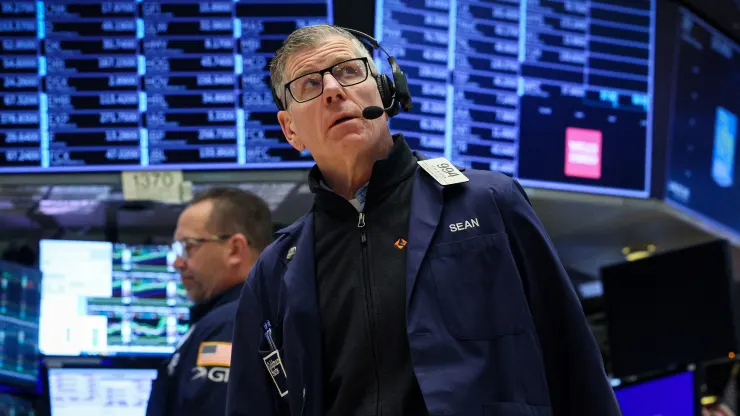
Stocks tanked on Wednesday after March inflation data came in hotter than expected, likely pushing off interest rate cuts by the Federal Reserve that investors have been anticipating.
Investor sentiment was further dampened following the release of March’s Fed meeting minutes, which reflected officials’ concerns that inflation isn’t moving quickly enough toward the central bank’s 2% target.
The Dow Jones Industrial Average dropped 422.16 points, or 1.09%, to end at 38,461.51. The S&P 500 slid 0.95% to 5,160.64. Nasdaq Composite tumbled 0.84% to close at 16,170.36.
With the exception of energy, all sectors in the broad market index were negative on the session. Real estate fell 4.1%, leading sector losses for the day. The S&P 500 had been treading water in April in anticipation of this inflation report following a roaring start to the year in which the benchmark rallied more than 10%, its best first-quarter gain in five years.
The CPI in March rose 0.4% for the month and 3.5% year over year, versus estimates for a 0.3% monthly increase and 3.4% from 12 months earlier, according to economists polled by Dow Jones. Core CPI, which excludes volatile food and energy prices, accelerated 0.4% from the previous month while rising 3.8% from a year ago, compared to estimates for 0.3% and 3.7%, respectively.
Fed funds futures trading data now suggests just a 17% likelihood that the Fed will lower rates at its June meeting, according to the CME FedWatch Tool. Traders are now betting that the first rate cut will likely take place at the central bank’s meeting in September.
The 10-year Treasury yield, a benchmark for mortgage and other loans, soared back above 4.5% following the inflation report. The 2-year Treasury yield spiked to nearly 5%.
Bank shares and industrial shares declined — with JPMorgan Chase dipping around 0.9% and Honeywell losing 1.4% — on worries higher rates will start to suffocate the economy. Once red-hot tech stocks Microsoft and Apple also pulled back 0.7% and 1.1%, respectively. Small-cap benchmark Russell 2000 dropped 2.5%.
“As we continue to see multiple reports in a row that are higher-than-expected, it becomes more difficult for the Fed to advocate cutting rates any time soon,” said Chris Zaccarelli, Independent Advisor Alliance chief investment officer.
Although the markets have managed to shake off January and February’s hot inflation data, signs of persistently higher prices are fueling Wednesday’s downturn, according to Eric Diton, president and managing director of The Wealth Alliance.
“This is as good a catalyst as any. I don’t think this is the end of the bull market. But I do think it’s an excuse for a lot of people who have had a lot of gains, to take some of those gains off the table,” Diton said.